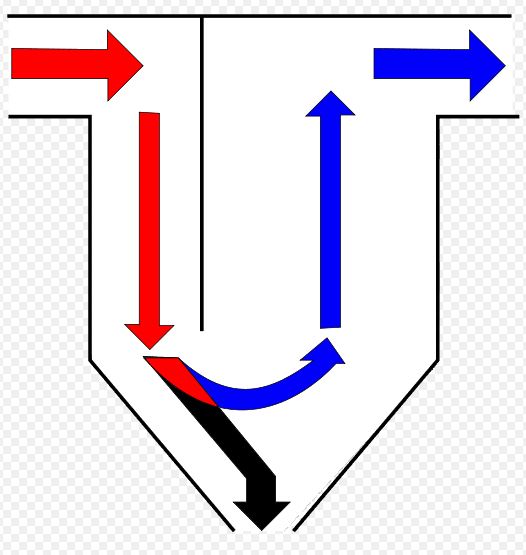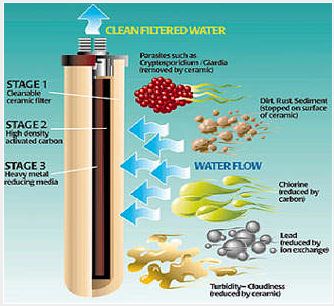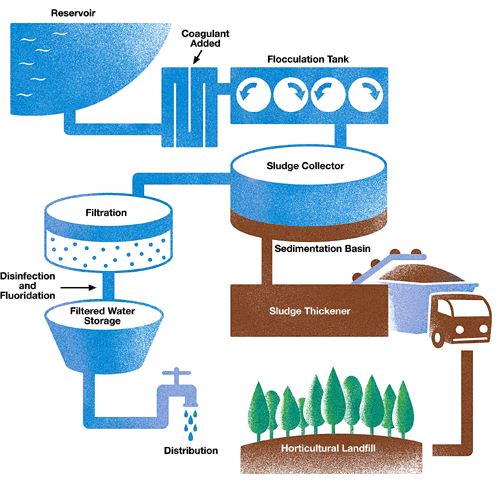Not all water is safe for drinking. Some water may be muddy while others may
be clear but contain impurities making it unsafe to drink.
Pure water should be clear, tasteless, has no smell, has no impurities like living organisms in it and should not have any dissolved substances in it like salts or gases.

To make water safe for drinking, we may have to use various methods. These methods are:
In this method, unclean water is left for some time to settle in a container.
Some particles settle at the bottom of the container.
The water in this container is then gently poured into another container.
Care must be taken not to disturb the settled particles.
The particles that settle at the bottom of the container are called sediments.

Unclean water can be made clean by passingthe water through a piece of cloth or a filter paper.
The cloth or filter paper acts as a sieve.
When muddy water is passed through the cloth or the filter paper, clear water runs out of the filter leaving behind the mud or soil particles.
Dissolved substances in thewater will pass through the sieve. Only solid particles are trapped by the sieve.
This method can be used after decanting to separate finer particles from water.
Though filtration may make water clear it does not make it safe for drinking.

After filtering water, one can heat the water until it reaches its boiling point of 100oC.
When water is heated to its boiling point, living organism in the water are killed by the heat.
Boiled water is safe for drinking, although boiling water gets rid of living organisms in water, it does not remove any dissolved chemicals or mineral salts that may have dissolved in the water.

When water is heated to its boiling point it starts changing to vapour. Water vapour is water in gaseous form.
The water vapour can be collected by cooling it in another container thereby changing it again to liquid.
Changing water to vapour is called vaporization while changing vapour to liquid form is called condensation.
Once all the water has evaporated from the first container, only mineral salts are left in the container.
The water that is collected in the second container is therefore clean and pure.
This process is referred to as distillation. Distillation removes all chemical pollutants from water.

Chemicals like alum , sodium hypochloride (water guard) may be added into water to make it clean.
